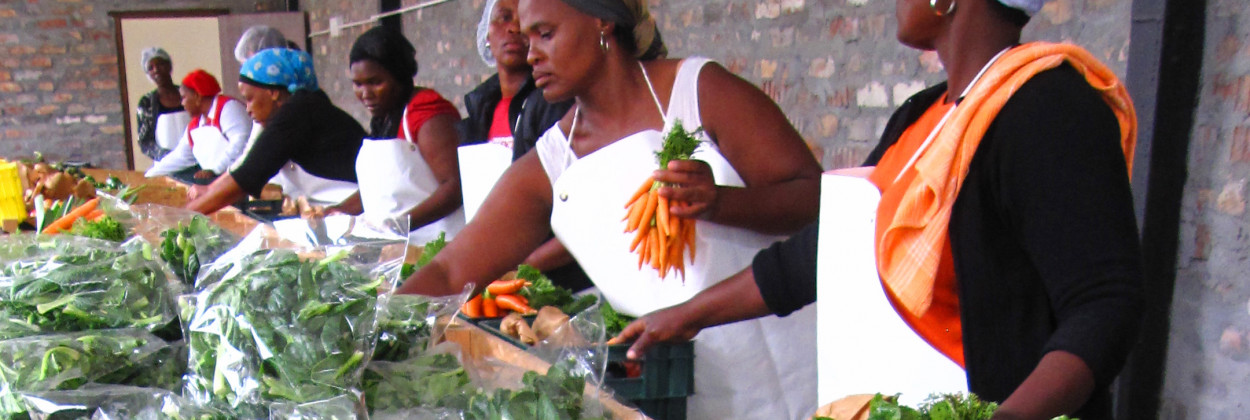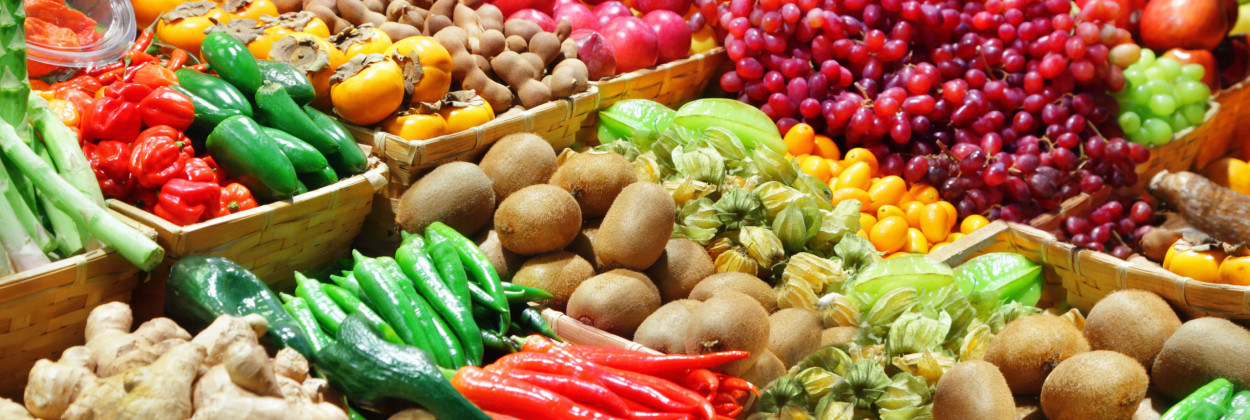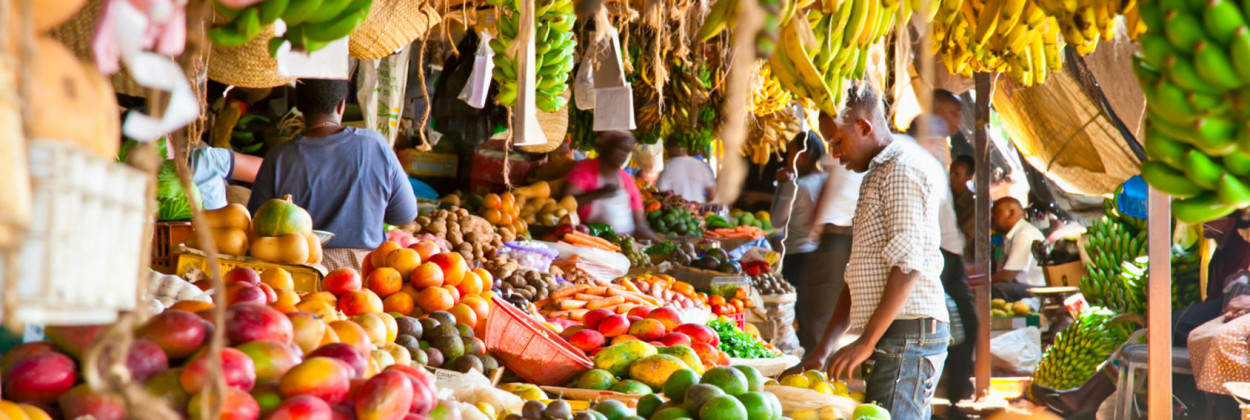The Enfidha-Chebika Food Hub is located in the Governorate of Soussa, which was registered in 2022 with a population of 749,657 people, and is situated on the northeast coast of Tunisia. This food hub is traditionally made up of small farming systems.
The food consumption transition in Tunisia is characterized by a decline in cereal consumption and moderation in the consumption of vegetables and fruits. In general, a trend of increasing food intake and westernization of the diet is seen, especially in urban areas towards more consumption of dairy and meat products, sugar, fat and salt.
The stunting levels in Tunisia are generally under 10%, whereas obesity is becoming a big public health challenge. Over the last 20 years, the prevalence of obesity among women has tripled. Half of the women in Tunisia (50.9%) are either overweight or obese. Generally, obesity is more widespread in urban areas
Except for iodine, which appears not to be an issue for Tunisians, micronutrient deficiency (iron, Vitamin A and D) exists; The dietary intake of these nutrients was below WHO recommendations.
In the rural area, the crops with the most important agricultural production in Tunisia are wheat (almost 48.2% of farmers produce it), olive (42.4% of farmers), barley (32.1%), and fava bean (25.5%).
Highlights about the work in this Food Hub
Technological innovations in this Food Hub
Biodegradable mulching. Innovative biodegradable and compostable material with high renewability will be converted into mulch films and initially tested in the field. They will compare the effects of biodegradable mulch films and bare soil on tomato performance and create awareness of the use of biodegradable mulch films in the Food Hub. The biodegradable soil mulch film has been designed to comply with the specific climatic and agronomic conditions of the selected Food Hubs fields and crops, to be handled manually by Food Hub operators, and to be competitively priced for end users.
Milling. The overall objective is to produce blended flours with improved nutritional and functional properties. Legumes and cereals blended flours will be produced from local food raw materials and characterised according to their physicochemical and nutritional properties. Their sensory properties, shelf-life stability and microbial analysis will also be determined.
Extrusion and baking. The overall objective is to process different locally available foods into novel convenient nutrient products, such as nutrient-dense flours that have the potential to address nutritional gaps, nutrient-dense snacks that have the potential to substitute low nutritional value snacks, and nutrient-dense noodles from locally produced foods. The nutritional and physicochemical properties of the developed food products will be determined. Product formulations will be developed using locally produced nutritionally rich foods. These will include cereals (maize/sorghum/millet), pulses (common beans) and oil seeds (soybeans/sesame) for all Food Hubs. The final products’ nutritional value, physicochemical properties, storage stability and sensory acceptance will be analysed. Energetic bars and baby food are the final products that will be produced in this Food Hub.
Highlights about the research with farmers
FoodLAND surveyed a total amount of 431 farmers in this region with the aim of improving the background knowledge of African smallholder farmers’ decision-making and of individual and contextual conditions. 47 out of these 431 farmers surveyed were women; all the rest were men. Almost 69% of farmers are not members of any local farmers’ associations.
According to the information gathered from the surveys, 85.1% of farmers’ income is lower than the average income in the region, the income of 14.6% of farmers is about the average or somewhat higher, and only 0.2% of farmers stated an income higher than average. Nevertheless, 60,8% of them are able to meet their household’s food needs, 20.4% experience some difficulties, and 18.8% face serious food shortages.
Besides, they have reported major worries regarding the near future about the dispossession of land (4.22 on a scale from 1 to 5), loss of farm jobs (4.16), food shortage starvation (3.58) and drought (2.89).
With regard to their interest and propensity to introduce new technologies and/or productions, 71% of farmers are extremely or moderately interested in adopting a technological innovation (4.13 on a scale from 1 to 5).
Highlights about the research with consumers
With the aim of enlarging background knowledge of African consumers’ food preferences and behaviours and of their socioeconomic drivers and measuring the current level of dietary diversity, FoodLAND has assessed food consumption at both individual and household levels that provide a good measure of diet quality and diversity. FoodLAND has conducted surveys both in households and out of stores in Sousse, which is paired with this Food Hub. 502 people participated in the survey. Below you can find some highlights extracted from these surveys, regarding consumers’ preferences, habits, incentives, and barriers when it comes to choosing food products for their households.
Parallel to the survey instruments, a series of incentivised economic behavioural experiments were developed to gain insights into consumers’ conscious and non-conscious decision-making processes. During the experiments, participants were asked to make decisions on the use of assigned tokens, which were going to influence both their final earnings and the earnings of one or some other participants.
A series of biometric tests were also conducted to gain insights into consumers’ conscious and non-conscious decision-making processes. These tests were conducted involving a sub-sample (200 participants) of the consumers who conducted the experimental and survey research activities. They were complemented with an experimental auction, to understand consumers’ preferences for different attributes of olive oil to increase its quality available in the market and promote the consumption of higher quality products.
Urban consumers consider on average their household diet as moderately healthy (around 3.5 on a scale of 5). When asked about their propensity to include in their diets a new food product with augmented nutrient content (e.g., naturally improved bean with high levels of proteins and minerals) that could complement their current household diet, consumers report a moderately high level of interest (3.5 on a scale to 5). When looking at the reasons behind the inclusion of new nutrient-dense food, Tunisian consumers rate the highest possibility of enhancing the healthiness of their household diet, their trust in doctor’s recommendations, and affordability. The most rated obstacles are feeling of lower food safety, price, and potential unfamiliar taste.
As for the reasons behind usual food purchasing behaviours, respondents in Tunisia rate the most on average product characteristics (taste, aroma, colour, shape), nutrition content, their willingness to be a good provider and diversify or balance their diet, and food affordability (price). The food categories mostly lacking in the consumer’s household diet are on average vegetables and cereal products.
Consumers were also asked about their interest in buying new local food products. They showed a moderate disposition to buy these local products (around 3.8 on a scale of 5). Among the reasons that make them choose the new local products, the three consumers rated the most were that it would be environmentally friendly, it could help local farmers and it could be easily found where they usually buy food.







